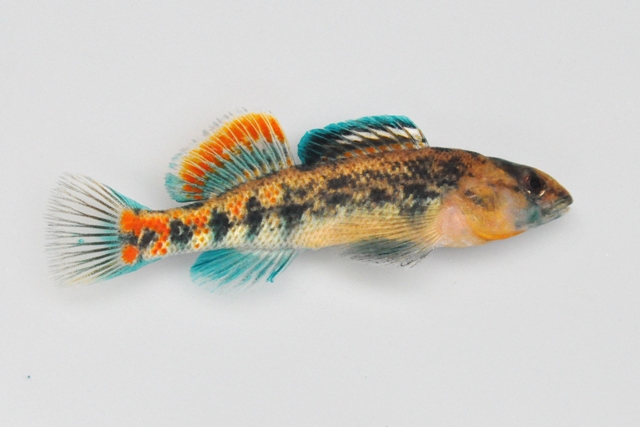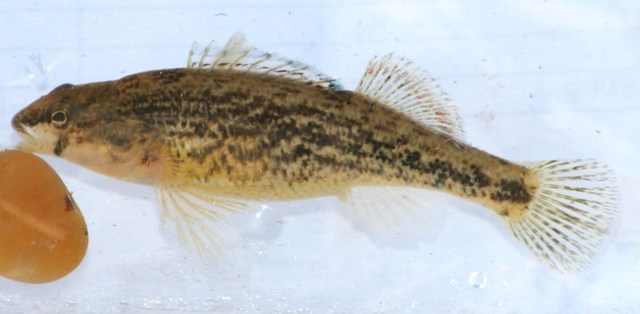Orangethroat Darter
( Etheostoma spectabile )


The orangethroat darter is found in very small headwater streams sometimes only a foot or two wide. The photo to the left is a male and right is a female.
Description
Orangethroat darters have 5-7 vertical bars on the rear half of their sides. These do not go all the way up to and over their back like those of the very similar rainbow darter. These bars are blue on males and dark brown on females. Additionally, orangethroat darters have blotchy horizontal lines along their side from just behind the gills back to the vertical bars. These lines are more visible on females than males. They also have a distinct tear drop marking under the eye which is blue and sometimes blurred on males and dark brown to black on females. The anal fin of orangethroat darters has no red or orange like that of the rainbow darter. Instead it is clear on females and blue on males. Male orangethroat darters have an orange throat and belly, the spaces between the vertical bars is flushed with red or orange, and red and blue on the two dorsal fins.
Habitat and Habits
Orangetroat darters are found in small headwater streams that are usually less than 10 feet wide. They are typically found in relatively slow moving riffles with fine gravel or course sand on the bottom. The distribution of this species has seen very little change over time. They are found primarily in the western half of the state. In southern Ohio this is from the Scioto River drainage westward and in Northern Ohio from the Sandusky River drainage westward.
Reproduction and Care of the Young
Orangethroat darters breed in shallow riffles from mid April to mid May. Females deposit three to seven eggs in the gravel or sand and the male fertilizes them. This can be repeated many times over several days during their breeding season.